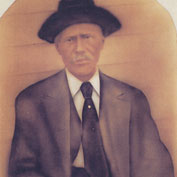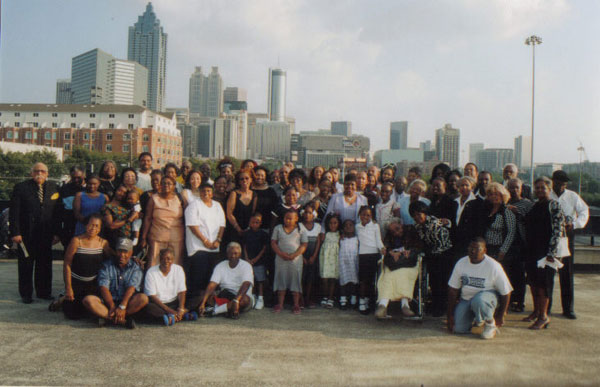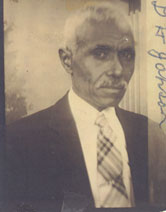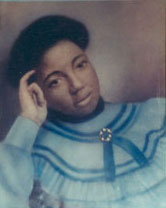The Johnson Family
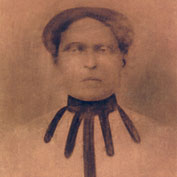
Home
Salter/Saulter
FamilySalter/Johnson
FamilyFamily
HistorianFamily
ReunionNative
American
Good HopeHickory
MississippiNewton
CountyFreeport, IL
Photo
Gallery
Filmore B. Johnson Remembered
I remember very little of my great grandfather. He died in 1945, four months after my sixth birthday. What I know most about him is what I was told by my elders, and that was a lot. I was told he died at the home of a daughter, Mary Johnson and her husband, Isaac Salter.
(Isaac Salter was a member of the Salter family living in the community and a brother to my maternal grandmother Susie Anna (Salter) Hayden.)
The first memories of my great grandparents, Filmore and Elizabeth [Suttles Levy] Johnson, were when I was about five years old and they were living apart. I never questioned it. Years later I learned that grandpa Filmore had become what the elders called “cantankerous.” Because of his senility it was very hard for Grandma Bettie [Elizabeth] to live with and care for him. They lived apart until his death.
While gathering information for the book I interviewed an aunt, Opal [Johnson] Ford, the eighty year old granddaughter of Filmore and Bettie. She told me this story.
“My mama, your grandma, Lillie [Tole] Johnson died when I was about thirteen years old and “poppa”, your grandpa, Daniel Johnson married again after her death to a woman named Mahala. We called her Mama Hallie. Just when she came to live with us, I went to live with Grandma Bettie and Grandpa Filmore. Poppa had sent me there to help Grandma Bettie with Grandpa Filmore and with chores around the house. During the time that I lived with them we lived in a little house past the church and the cemetery near Mus Godden house.” She continued, “Before long they were separated; he went to live with Uncle Ike and Aunt Mary. I went back home and grandma Bettie went to live with their other daughter, Aunt Nupsy [Lela Johnson Edison] for a while. Later she lived with us until Grandpa Filmore died. After that she went to live with Aunt Mary and Uncle Ike. Although when they lived apart Grandma Bettie would walk every day the short distance down the road to Aunt Mary’s house to visit with grandpa.”
In his later years, on most Sundays, my dad would take us to Aunt Mary’s house to visit Grandpa Filmore. I remember him lying in what looked like to me a very large feather bed in the front room of the house. The front room, or the parlor as it was sometimes called, had been changed around to suit grandpa’s needs. One by one, we who were old enough, would walk up to the head of the big feather bed and say, “How do you feel grandpa?” He would sometimes nod and reply “fine” or just nod. Our sister Doris, who we called “Beet”, is a year or so older than I and remembered things more vividly than most, said Grandpa Filmore said to her, “I feel with my damn hands how do you think I feel?” I didn’t hear him say that, however I have no doubts that he said it.
Great Grandpa Filmore was not always bed ridden. My first memories of him were sitting in a rocking chair on the front porch of Aunt Mary’s house with a walking stick in his hand, or it was hanging on the back of his chair. Now, as you will see as you read more in the book, there are many stories surrounding Great Grandpa Filmore. However, the most intriguing story is in regard to Grandpa Filmore’s walking stick.
Other grandchildren and great grandchildren, some younger, some older and some who were not born before grandpa died, remembered much more about Grandpa Filmore than I did and often told stories surrounding his walking stick and his “cantankerousness”. According to the teller of the story, Grandpa Filmore would take his cane and trip the grandchildren, or whoever, as they passed by. Oddly enough, everyone I interviewed in the family over the age of seventy said they had the walking stick and it was given to them by some family member after grandpa died. I myself have that very walking stick and it was given to me by my dad. And most often that family member could produce a walking stick they kept in a closet or where I keep mine, hanging on a door knob.
While interviewing grandchildren regarding their memoirs of Grandpa Filmore, a great grandson Glen Johnson only knew what he had heard from his father, Tom. Tom E. Johnson recalled his grandfather very well. ”He said his family lived near his grandfather. He visited him ‘most every day. He said his grandfather had the habit of giving his grandchildren nicknames. Glen said he gave my dad the nickname, “Soot.” Glen said his father told him that once Filmore was confined to his bed, he demanded three feather mattresses.
Filmore B. Johnson
The Early years
As long as I can remember I have heard from the family elders of Grandpa Filmore’s community building enterprises; “Your great grandfather Filmore, he bought land enough for a church, a cemetery and a small house for himself.” I also heard that he and his wife, Bettie, were proprietors of a small peddler’s cart and sold goods that were not produced in the community: items such as; shoes, pots, pans, candy, sugar, salt and other supplies. He is said to have been of some assistance in procuring land for other community members and was overseer for the building of the church and a one room schoolhouse. In the early 1900’s Filmore had a professional photographer take pictures of himself and his wife and some of his younger children. From my memories, these portraits were mounted in carved oval frames and hung on the wall in the front room at Aunt Mary’s house.
Filmore and Bettie and their many children; Fannie, Daniel, Robert, Eliza, Julia, Mary, Preston, Minerva, Belle, Lela “Nutsy” and Sallie, lived for a short while near the church in a small a-framed house on about 10 acres of land. Also, it was commonly known that Grandpa Filmore had what is identified as “outside children.” One accepted outside child was a great aunt, Pearl Johnson Little. Aunt Pearl died in 1980. In her obituary, it confirms she was born in Hickory, Mississippi on September 24, 1888. She married Zack Little and moved to Birmingham, Alabama. While in Birmingham she had one daughter who is listed in the obituary as Mrs. Louis L. Davis. Also listed are three grandchildren (Thomasine P. Cleveland, Mildred Turner and Arthur H. Pinkard.) The obituary states that she leaves to cherish her memory three sisters; Sallie Johnson Salter, Lela Johnson Edison, Minerva Johnson Mc Donald, and one brother, Preston Johnson. Research uncovered a wealth of information regarding Filmore B. Johnson and the early years of his life from his enslaved birth, until his death as a free man.
(The Death Certificate reports Filmore B. Johnson died of Senility on December 13, 1945)What I know regarding Filmore Johnson from research shows that he owned land and could read and write and that he sent his children to school as they reached the age of five years. How long they stayed in school and how often they attended school the research did not show. His daughter, Eliza Johnson, was one of Good Hope Colored School’s first schoolteachers. His sons attended school as often as they could between farming and timber harvesting.
(On January 19, 1929, County Record of Deeds shows 25 acres in section 24 Township 5 Range 12 in Newton County was purchased, for the sum of 90.00 dollars from S. Mc Cary by Filmore Johnson.)Filmore’s oldest son, Daniel Johnson, was a circuit preacher and could read and write. Some years later Reverend Daniel Johnson owned as much as 350 acres of timber land. Daniel’s sons, including my father Archie Johnson, made a fair living harvesting timber, mostly pulp wood and other lumber from the timber lands. Filmore Johnson, his brothers, his children and other community members purchased several acres of land for farming and timber harvesting in rural Newton County near Hickory, Mississippi. Years later the area became known as Good Hope Colored Settlement.
Robert “Johnny” Brand said of Filmore Johnson, “My family used to have a general store in Hickory and in the old days they rode to Meridian for supplies on wagons pulled by mules. It took two days to get there and we camped out along the road on the way. We sold barrels of sugar and flour to Filmore Johnson who drove up from Good Hope in a horse and buggy. He had a small store in the Colored Settlement a few miles south of Hickory. “When Filmore lived in Hickory we bought pies and cakes for our store from his wife, Bettie.” He continued, “The Colored Settlement of Good Hope appeared to be self-sufficient and didn’t depend on the white man or the government to get along. They were small entrepreneurs.”
Johnnie recalls Filmore in the 1930s arriving at the store on a horse pulled buggy and loading up staples like huge sacks of sugar and barrels of flour to take home. “Sometimes”, Johnnie said, “I would deliver goods to Filmore and his wife, Bettie. I’d follow a dirt trail about a mile off the road, and when I reached the house, Bettie would greet me with freshly made cakes and pies. When I was a little boy, and later in life, I called her “Aunt Bettie”. To call her Aunt meant that she was someone who we respected. The Johnsons were hard working people. Filmore was known as a proud, stubborn man. Once he fixed his mind on doing something a certain way, nothing and no one could talk him out of it.”
(Robert “Johnnie” Brand a White general store owner in Hickory, Mississippi)
|
|
|
|
